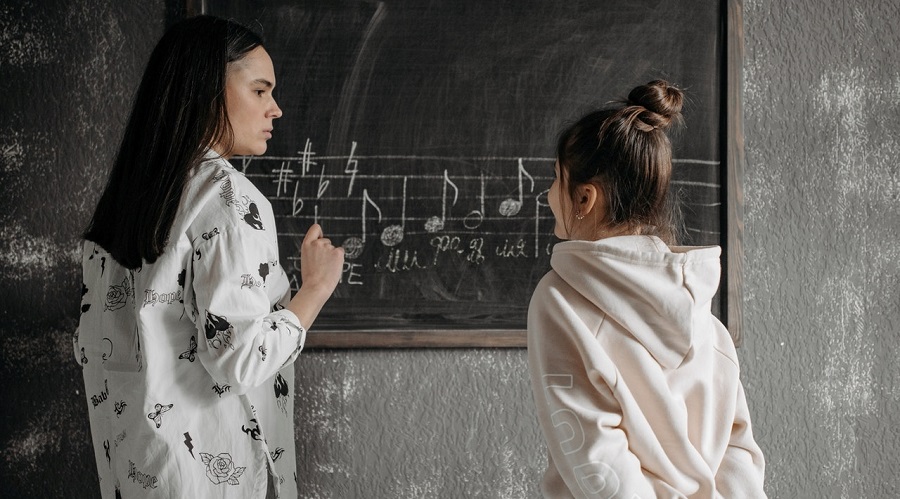In the 18th century, Johann Sebastian Bach amazed music lovers with an intriguing musical technique by introducing canon in his famous musical works Art of the Fugue and Goldberg Variations.
Even though the Art of the Fugue is classified as incomplete work, the use of a canon is still considered a hallmark of classical music composition.
So, what is a canon in music? How did it evolve?
What is the difference between canons and other similar techniques? Keep on reading to find the answer to these questions.
What is a Canon in Music?
A canon is a musical composition technique that relies on the use of counterparts. Basically, a canon is made of a single melody followed by several imitations of the same melody played after a specific duration.
The imitation notes can be exact replicas of the original one but played at a later time, or they can be altered with some little variations, in addition to the starting time.
A canon is a counterpoint, which is the relationship between melodic lines. Usually, two or more melodic lines have the same harmonic reference point, but they feature different melodic shapes.
The melodies that make up a canon have different names based on their position. The first melody is the leader or the dux because it’s the basic one. The other melodies are called the followers because they imitate the original one.
A follower melody can be an exact imitation or replica of the original leader melody, with the same intervals and rhythms. But in other cases, it might involve a little variation that adds life to the music.
There are different types of canons that musicians used in the past and still do up to this date. A simple canon can occur in the same note value. With a little change, subsequent notes can have a longer or a shorter note value.
When Were Canons First Used?

Although Bach brought musical canons under the spotlight, they were widely used long before his time. During the Middle Ages, religious and secular music composers used canons to add body and texture to their musical compositions.
The use of canons continued during the Renaissance and Baroque periods, except that during this period, the use of imitative counterpoints was called fugues.
Using fugues became popular during the Middle Ages to refer to work that showed a canonic style, even though the two musical terms aren’t identical.
As a matter of fact, the form evolved from earlier contrapuntal musical compositions when Johann Sebastian Bach, the father of canons, shaped his music after the works of other Baroque compositions where the fugue played a central role.
What Are Types of Canons?
Canons come in various variations and are classified based on these traits that can be altered. For example, they’re classified according to the number of voices, whether the voices are played inverse or retrograde, or tempo.
They’re also characterized based on the interval that relates the original voice to the subsequent ones, the distance between voices, and whether the intervals of the subsequent notes differ from the original one or stay the same.
Number of Voices
A canon in two is a canon that is made of two voices. A canon: four in two means four voices that are played in two simultaneous canons.
Complexity
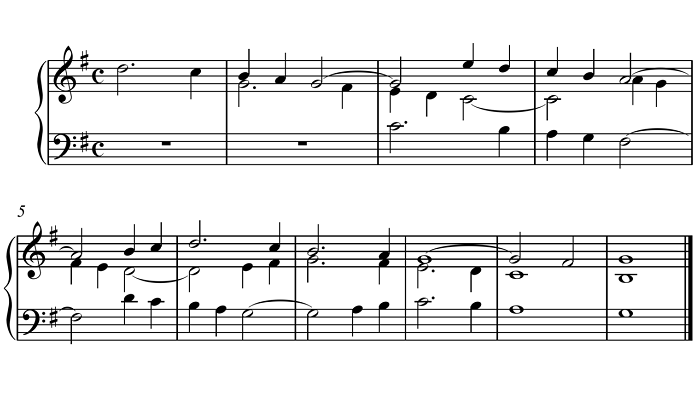
A simple canon is a round where the subsequent voices imitate the original one but start a little later. This type of canon is popular in children’s songs. A double canon has two themes, while a triple one has three.
A mirror canon, the follower voice is the inverted version of the original or leader voice. A table canon is placed between two musicians and is read in opposite directions. In this canon, a single line is needed because the notes are inverted and played in retrograde.
Other complex canons include the rhythmic canon, which shows equal rhythms from different voices to produce a regular pulse train. Finally, a puzzle or riddle canon is a mysterious canon where only one voice is notated, and the others are to be guessed.
Interval
A canon can be considered a strict or a free canon based on the interval. If the imitating voice resembles the leader and features the same interval number and quality, then it’s a strict canon.
A free canon has the same interval number but different quality, where the note changes from major to minor.
Direction
You’ll have an inversion canon when the leader voice goes up by a specific interval, and the follower goes down by the same interval.
A crab canon is also known as a retrograde canon, where the follower voice accompanies the leader voice but is played backward or retrograde, which is how a crab moves.
Tempo
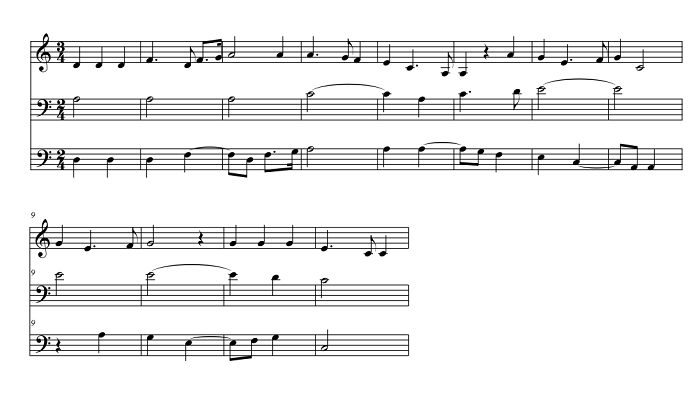
In a canon, a follower voice might imitate the leader with a slight difference in tempo. The rhythmic value of the follower can be double or half the value of the leader. This is called a mensuration canon.
Unlike a typical canon, the leader and the follower can start at the same time in a mensuration canon and progress differently due to the difference in tempo.
How Did a Canon Evolve in Music?
Sumer is Icumen in is probably one of the earliest examples of how a canon is used in musical composition.
The famous piece was written sometime in the 13th century, probably by W. de Wycombe, although nobody is sure about the name of the composer. It’s also called a rota or round, which was the earliest form of a canon but later developed to a newer form.
It’s called a perpetual canon, where at least three voices sing or play exactly the same melody. Each voice begins at a slightly different time or a little delayed, so the different parts of the same melody eventually clash, although they fit in harmony.
In a way, the round represents the most basic form of a canon. Unlike a canon, the round has no fixed ending because the round can be repeated several times, for as long as the composer or singer chooses to repeat the voices.
A canon is a little bit more complex because it doesn’t go indefinitely. Moreover, the same melody can start at a different pitch, rather than being slightly delayed. By adding more variants to a round, a canon is composed.
In some cases, a musical composition would have canons that are played or sung in harmony with a free melodic line. La Harpe de Melodie by Jacob de Senleches is a clear example of how a canon played a crucial role in French and Flemish Baroque music.
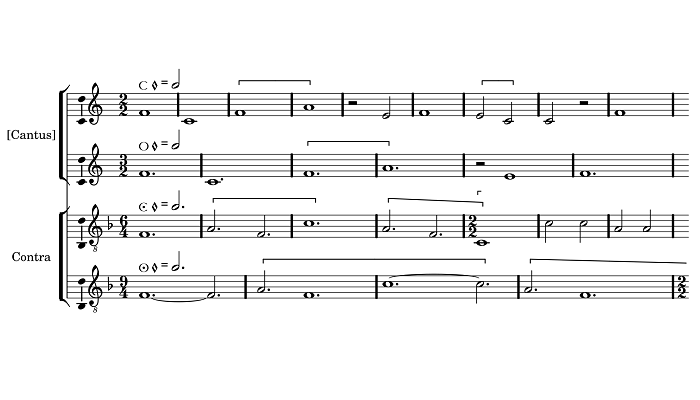
Musicians would use a canon in a virelai, which was quite common in music and poetry. This virelai was quite popular in the 13th to the 15th century music scene.
Jean d’Okeghem composed his Missa Prolationum with a canon cycle, which became one of the traits of Flemish Baroque music.
In his composition, he used a double two-part canon, where each one plays at a different speed. Here the canon was used to add a complex rhythmic structure to the music.
It became one of the traits of Baroque music, which is characterized by the introduction of polyphonic music.
In the 15th century, a canon became popular in the settings of masses, where music is played in the Catholic Church.
The German Baroque composer Johann Pachelbel composed one of the most famous canons, Canon in D. This piece is still considered one of the most popular pieces played in ballrooms and weddings.
Although Bach isn’t the only musician to use canons in his musical compositions, his work remains one of the famous examples.
Bach’s Goldberg Variations remain to be some of the most extensive examples of canons. Each third variation of this composition is written in a canon form, and each one of them starts at a note higher to add complexity to the music work.
In the 20th century, Conlon Nancarrow composed his Study for Player Piano No. 21 Canon X, usually played by the player piano because it’s extremely challenging to play.
What Is The Difference Between a Fugue and a Canon?
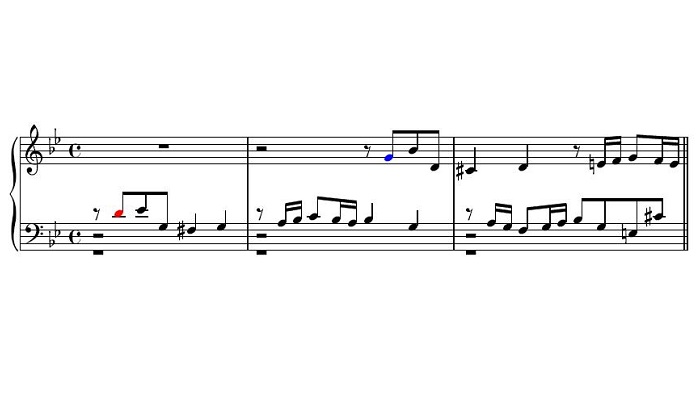
A fugue, just like a canon, is a contrapuntal musical composition technique that involves two or more voices. It’s built on a theme that’s introduced at the beginning, and then there’s a repetition that recurs throughout the composition.
The repetitive melodies or voices in a fugue are repeated at different pitches and are usually made of three stages.
Each fugue has an exposition or the initial presentation, a development where the musical idea is communicated, and a final entry where the music returns to the original tonic key.
Typically, a fugue will open with a sound that states the subject or the main theme, then the other sounds will follow. Another sound or voice will repeat the subject at a different pitch, while the other voices will repeat the subject in the same way.
Each voice would complete the subject until the exposition was complete. After that, a connecting passage made of more entries in other related keys will follow.
These developments, also called episodes, involve entries that alternate until the final one returns to the opening or tonic key and then closed. Such a composition style was widely used in songs sung in royal courts.
In that sense, a fugue will usually have four or more voices, and it’s considered as a long melodic line that is divided into sections. It’s a less strict form of imitation, where the initial melody is repeated in different voices throughout the whole musical piece.
The subject in each voice usually alternates between the tonic and dominant keys. In some cases, other voices can show variations of the first subject, like they can be played in an inversion form, although this is less common.
A canon is different because the voices are much more dependent, simply imitating one another throughout the entire musical composition.
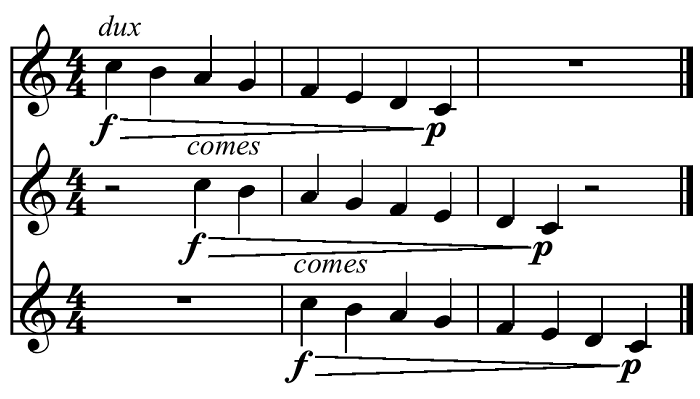
Unlike a fugue, the voices don’t set on the same note in a canon, regardless of where each voice finally sets. The voices or notes can also be the reverse of one another in a backward motion
In some cases, a canon shows a slight change in the voices, but in most cases, it doesn’t. In most cases, the second and third voices start the same melody with similar notes, but they’re a little bit delayed.
One of the most famous examples of a canon is the Canon Alla Decima by Bach. The first voice starts with an A in this composition, while the second one starts with a C.
Since he was the king of canons, Bach, along with other Baroque composers, liked to challenge himself by writing more complex canons, like this magnificent Crab Canon from Bach’s Musical Offering.
This musical composition shows two complementary but backward lines that are placed next to each other instead of stacked on top of another.
A visual representation of the notes shows how they start by being a simple and single melodic line which then progresses to something more complex.
A canon, in that sense, is a little bit stricter and more structural than a fugue because, mostly, all the voices play the same note with an offset or delay.
Which Music Genres Rely on the Use of Canons?

Although canons were first used in classical music, they became one of the traits of folk music in several cultures.
Folk songs in the Balkans and Africa rely on the use of canons, usually when a song isn’t accompanied by music, which is quite common in settings where folk music is played.
In Western Europe, songs like the French Frère Jacques and Row, Row, Row Your Boat feature canons that are sung or played indefinitely.
A round or a simple canon is still popular in children’s choir performances because the leader is able to other performers a simple melody. It’s basically the same melody sung by different people starting at multiple times.
In this children’s song, London’s Burning, the same melody is repeated several times to add an impressive effect. Here, the notes are played right after one another without delay, but they start from different notes.


